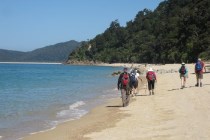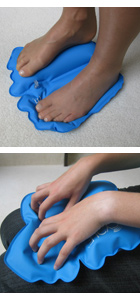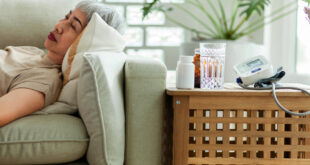Joint and Muscle disorders are the leading cause of disability. They affect one in four New Zealanders and are estimated to cost the country over $5.5 billion per year.
So says a study produced in 2009 by the Bone and Joint Decade – a global network dedicated to improving the health-related quality of life for people affected by musculoskeletal disorders.
Executive Director of the Bone and Joint Decade, Kim Miles, commented in the publication, Healthwise (Oct, 2009) that these disorders are often overlooked, “mainly because they're not fatal and are often seen as an inevitable consequence of ageing. As a country, we must encourage patients to be more responsible for their own care and we must promote cost effective prevention and treatment,” he said.
As we age, we tend to be less active which generally does not promote joint and muscle health. Our joints and muscles ache. Perhaps we cannot walk comfortably very far or are less stable on our feet than we used to be. What then can we do to help ourselves relieve some of these hindrances to our lives and avoid further problems?
The advice from gerontologists and health professionals is the word we probably don't want to hear – exercise. We get tired of being told to exercise. Yet it is amazing how often the body is able to heal or relieve symptoms when the blood supply is restored and muscles and joints are exercised. The Age Concern website reminds us “Physical activity can add years to your life and life to your years”.
Whether or not we believe this, we are good at making excuses. We're too old, too unwell, too tired, too weak, too overweight or too busy. But it's never too late to start caring for ourselves in this way. Whilst walking is an easy way to exercise daily, there are many alternatives such as dancing, swimming, Tai Chi, cycling, exercise classes or going to the gym. And for those less mobile or with joint problems, seated exercises can be most effective. Such classes are provided in many communities and retirement villages. Diabetes and arthritis support groups can help with advice on these.
 Doctors and health professionals now tell us, as Kim Miles commented, that we must take more responsibility for our own wellbeing and care for ourselves in every way possible. There are things doctors can advise us about but cannot do for us. Self- management is the term often used for doing our part to help relieve our symptoms and care for ourselves. Exercise must be taken seriously. Even very gentle exercise done in the lounge at home may help relieve some of our problems.
Doctors and health professionals now tell us, as Kim Miles commented, that we must take more responsibility for our own wellbeing and care for ourselves in every way possible. There are things doctors can advise us about but cannot do for us. Self- management is the term often used for doing our part to help relieve our symptoms and care for ourselves. Exercise must be taken seriously. Even very gentle exercise done in the lounge at home may help relieve some of our problems.
One simple way to exercise while sitting in the evenings or when confined to the indoors in cold or wet weather, is using the AirCycle inflatable exerciser. This encourages gentle exercise for muscles and joints, suitable for even the least mobile of us. It is a great circulation booster and helps strengthen our muscles, relieve swollen ankles, cramps, joint pain and the symptoms of a variety of health conditions – muscular, joint and circulation.
One woman remarked that after using her Aircycle she felt as though she'd had a good lube! She felt well oiled and greased, more flexible and gardening was easier
AirCycles are now available in the GrownUps Store.
To see the Aircycle at work click here.










Join the Discussion
Type out your comment here:
You must be logged in to post a comment.